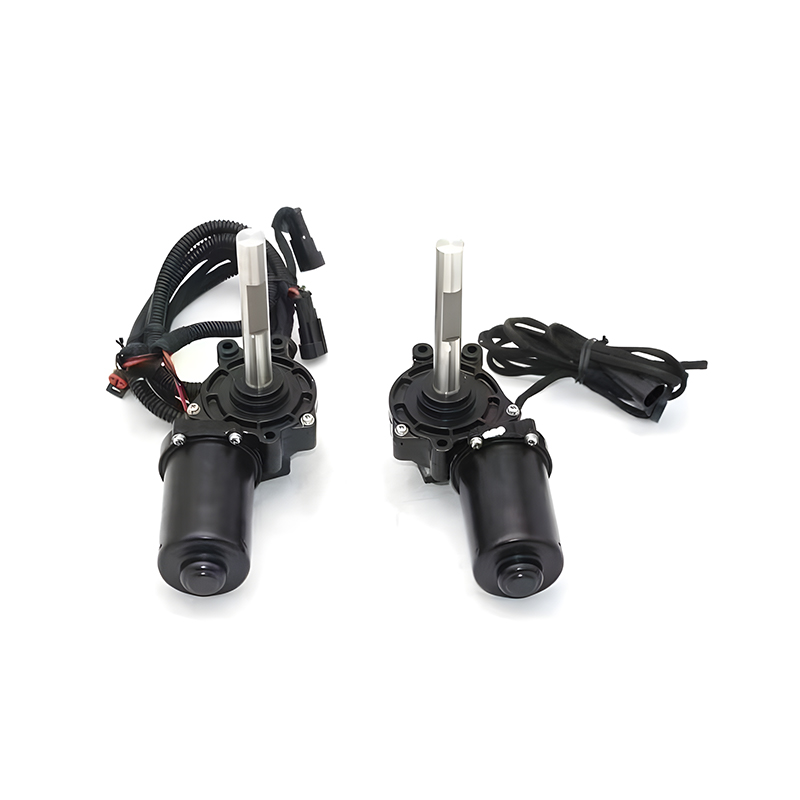Modern automotive interiors are evolving to offer greater comfort, adaptability, and efficiency. At the center of this transformation is the humble yet essential seat tilt motor, a component that often goes unnoticed but plays a major role in passenger comfort. A seat tilt motor allows drivers and passengers to fine-tune their seating angle with the touch of a button, adjusting the inclination of the seat base for improved ergonomics. As more vehicles transition to fully electric adjustment systems, the seat tilt motor compatible with multiple vehicle models is becoming an industry staple.
One of the reasons why this motor stands out is its flexible design. By maintaining a standard mounting configuration and a compact form, it can be used across a variety of vehicle platforms, from sedans and SUVs to commercial vehicles. This reduces the need for platform-specific components and simplifies assembly lines. It also streamlines inventory management for manufacturers who source car seat electric motors across different model lines.

The integration of seat tilt motors is part of a larger trend toward modular electric seat systems. Car seat electric motors are used not only for tilt adjustments but also for sliding, reclining, and even lumbar support. Within a single vehicle seat, multiple motors work in coordination to offer a customizable seating experience. In this setting, the tilt motor's function is specific: it adjusts the angle between the seat cushion and the floor, improving blood circulation on long drives and helping users find their preferred driving position.
This system becomes even more efficient when the tilt motor works in harmony with other interior electrical systems. For example, 12 volt power window motors and car seat electric motors often share power sources, control units, and wiring paths. As vehicles are designed to be more integrated, ensuring compatibility between systems is key. A seat tilt motor that easily connects to existing power and control infrastructure saves engineering effort and shortens development cycles.
While discussing electric components inside vehicles, it's impossible to ignore how standardized technologies have impacted areas beyond seating. Consider the parts of a wiper motor, which include the gear mechanism, electric motor core, worm gear, and output shaft. Just like car seat electric motors, the parts of a wiper motor must be engineered to be compact, durable, and compatible with various vehicle sizes. These components share similar design philosophies—such as using quiet operation mechanisms and sealed casings to handle environmental stress. Interestingly, some of the materials and motor technologies used in parts of a wiper motor have found their way into seat motor development, particularly in terms of less noise and increased reliability.
The electrical demands of a vehicle are constantly increasing, yet the standard voltage for interior motors remains 12V. That's where the efficient use of power becomes critical. A 12 volt power window motor, a seat tilt motor, and the parts of a wiper motor all must work within tight energy budgets. This has led engineers to explore more power-efficient motor windings and control algorithms to reduce current draw without compromising performance. These advances have resulted in 12 volt power window motors and seat motors that can function effectively even when multiple systems are running simultaneously—such as adjusting seats while operating power windows or windshield wipers.
From a production standpoint, the value of a seat tilt motor compatible with multiple vehicle models lies in its versatility. Manufacturers can use a single motor design in several seating systems with minor adaptations. It simplifies tooling and ensures a consistent level of performance across vehicles. Moreover, the same design standards applied to car seat electric motors are often aligned with those used in 12 volt power window motors, enabling cross-functional component design and reducing costs in long-term production runs.
As vehicle interiors continue to become smarter and more integrated, the importance of compact, efficient, and multi-compatible electric motors will only grow. Whether it's adjusting a seat, lifting a window, or activating a windshield wiper, the shared engineering principles behind car seat electric motors, parts of a wiper motor, and 12 volt power window motors contribute to the seamless automotive experiences drivers expect today. And the seat tilt motor—quiet, reliable, and adaptable—continues to play its part in that evolving landscape.
Your email address will not be published. Required field are marked*